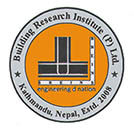
Today (NST)
Monday, Jun 16, 2025
Smart Search
Please post in your Technical Queries, Comments & Suggestions to Contact us......
Advertisement

For Advertisement
|
|
| Subscribe to BREINS Sci-Tech |
| Visit this group |

Seismic Retrofitting
General Deficiencies in Reinforced Concrete (RC) Structures
There are three basic types of structural deficiency encountered in reinforced concrete construction. These are design, detailing, and construction deficiencies.
Design Deficiencies Include
• Inadequate provisioning of lateral-load resisting members (e.g., lack of shear walls or special moment-resisting frames)
• Lack of redundancy (alternative load paths) in the structural system (i.e., the beams and columns are sparse, or improperly located, such that a total structural collapse is triggered in the event of damage to only a few members)
• Irregularities in plan or elevation (e.g., L or T-shaped plan, or vertical setbacks)
• Presence of soft or weak storeys, especially at the ground floor, as in the case of tall first storeys with large openings for doors and windows
• Presence of short columns, which usual fail in a specific pattern that is catastrophic
• Presence of overhangs
• Strong-beam weak-column joints, that is, cases where the beams are stronger than the columns they connect to. The problem is that damage at such connections tends to occur in the columns rather than the beams, and since the floors above the column rely on the column more than on the beam; and, column damage can be more catastrophic than beam damage
Key Detailing Deficiencies Include
Inadequate transverse reinforcing bars
These are the smaller steel
reinforcing bars running perpendicular to the axis of the beams and
columns. Transverse reinforcement provides resistance against shear
forces and imparts confinement to concrete within. This confinement
increases the ultimate strength of concrete, and enables a beam or column
to accommodate more damage without failing catastrophically. It is especially
important to avoid wide spacing of transverse bars near beam-column
joints. Modern design codes provide specific provisions for narrower
transverse reinforcement spacing.
Short overlap lengths at spliced joints
These are locations where
one of the reinforcing bars that runs longitudinally along, say, a column
ends and overlaps with another that continues farther along the column,
as in the bottom portion of the column. If the overlap is too short,
the force in one bar cannot be adequately transferred to the next one,
which produces a generally unanticipated weak point in the column.
Construction Deficiencies Include
Adverse conditions such as those listed above may be further aggravated by construction deficiencies, such as low-quality workmanship, use of inferior materials, and deviations from structural drawings and specifications during the construction phase.